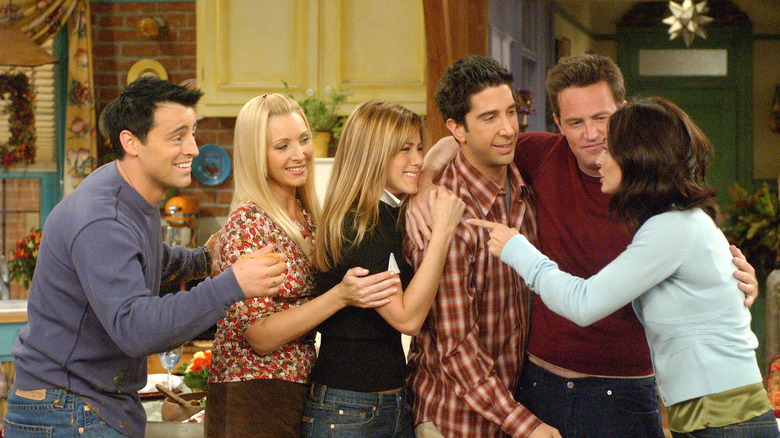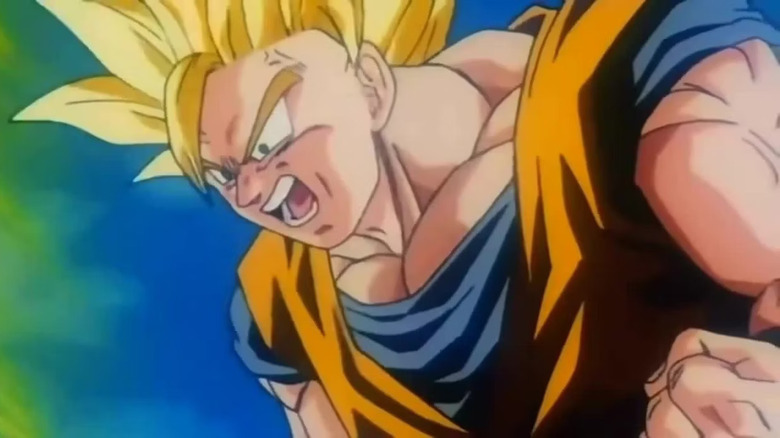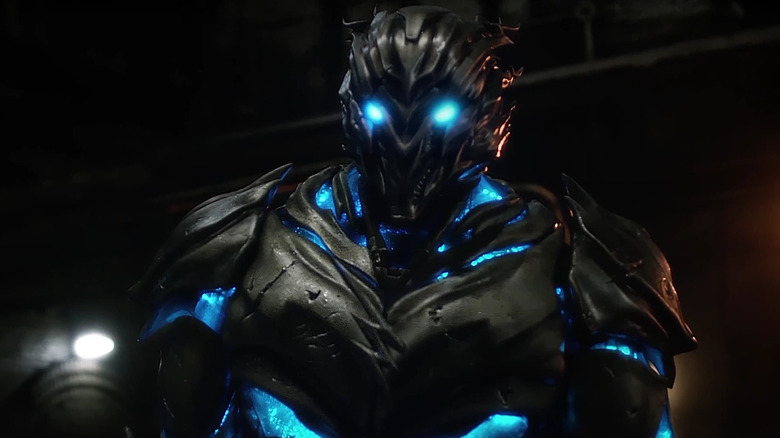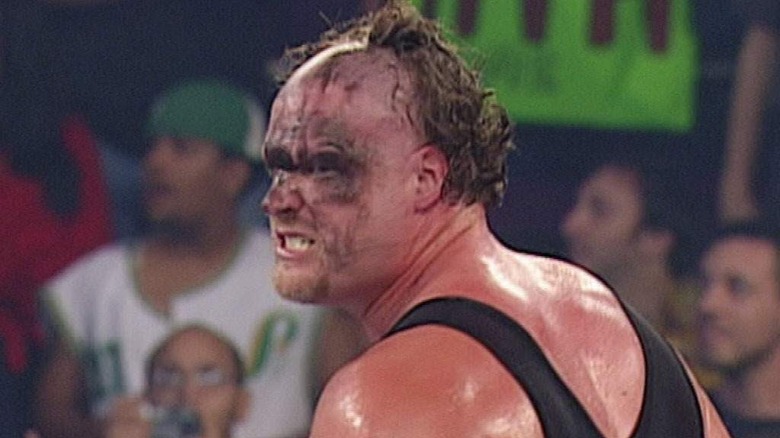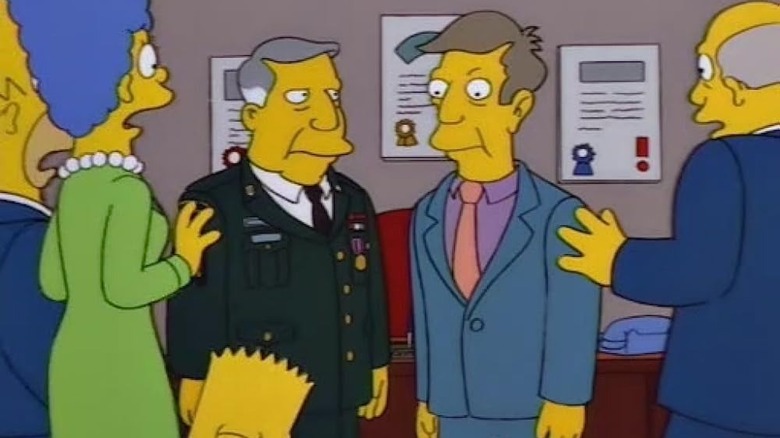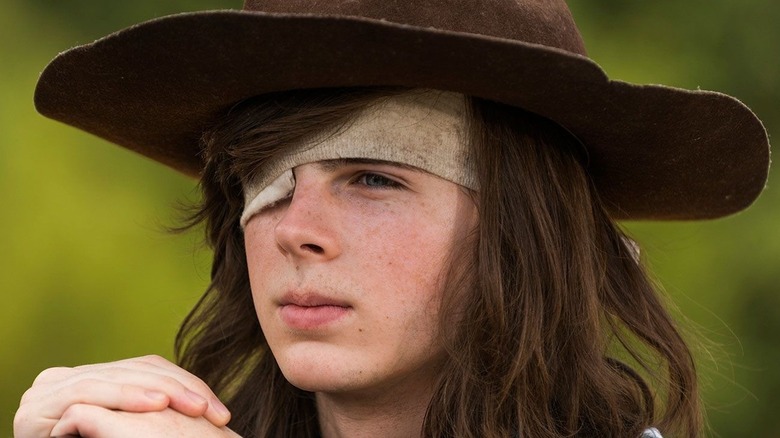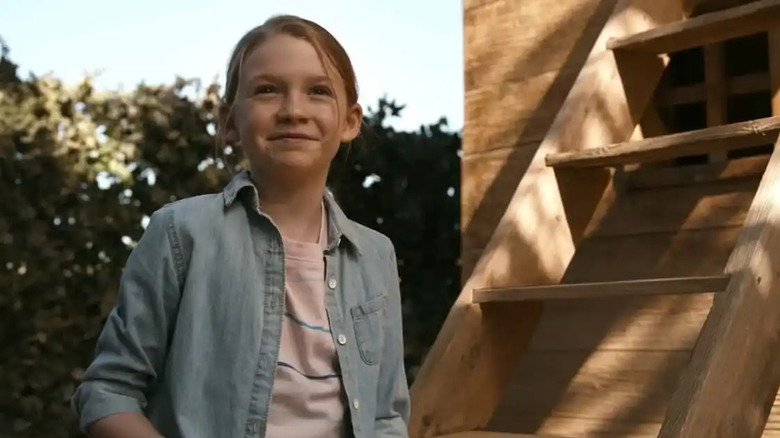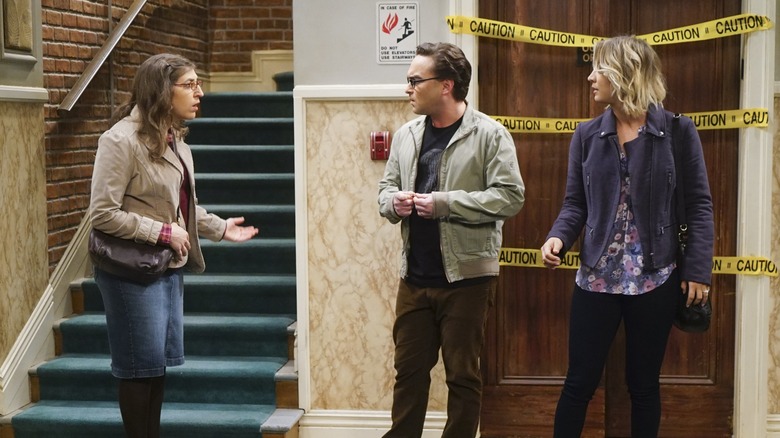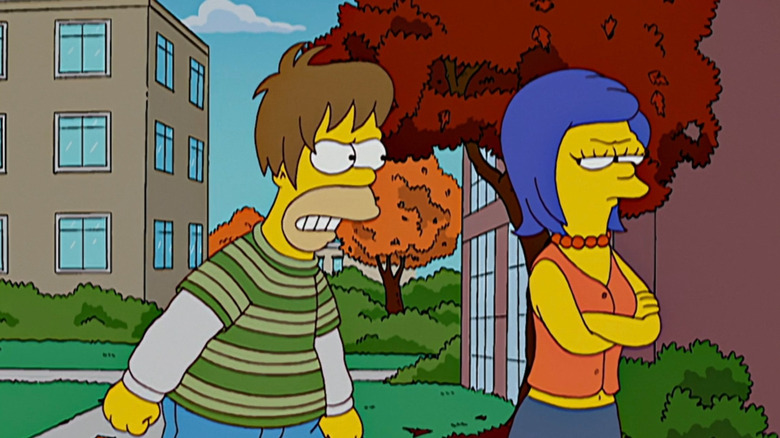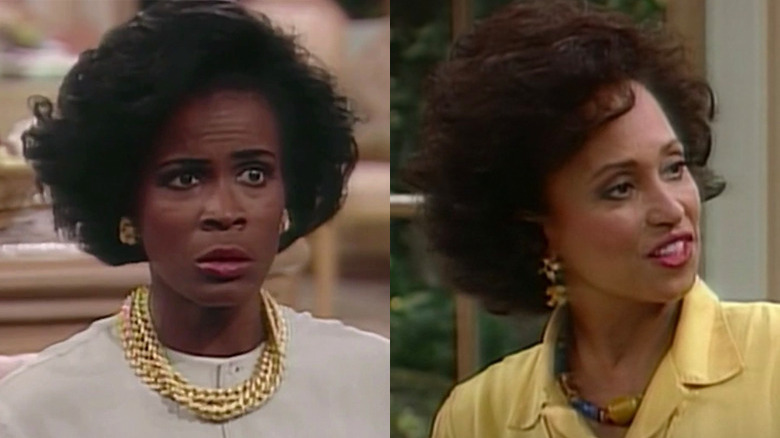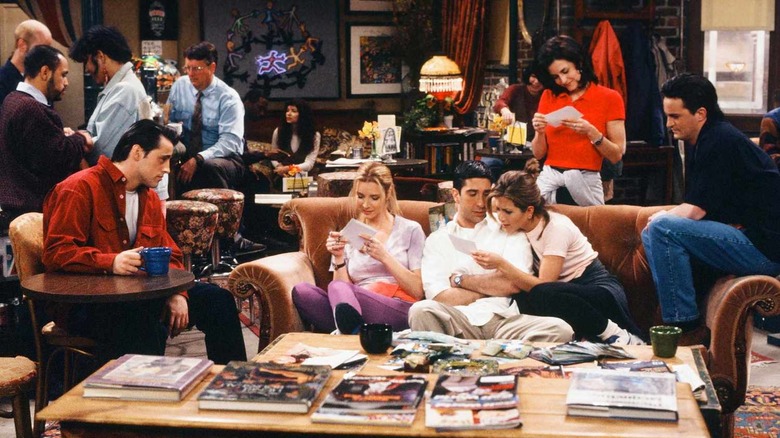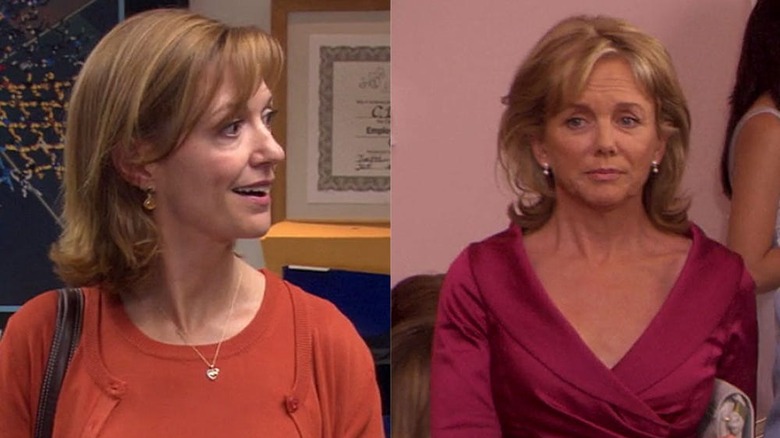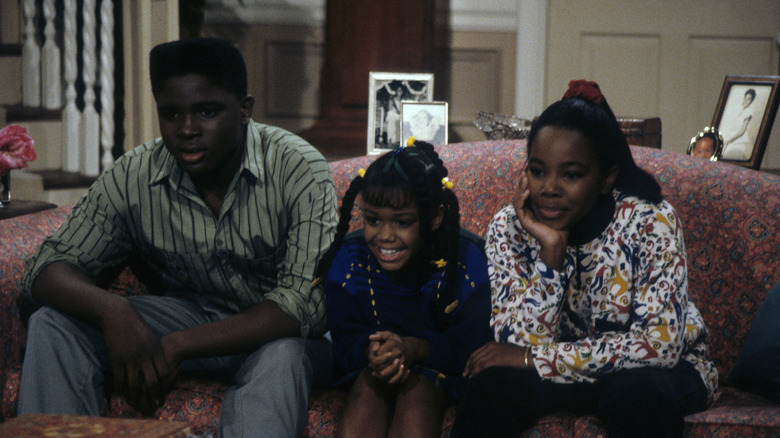12 Biggest Continuity Hiccups In TV History
Being a writer, especially for episodic television, isn't easy. Having to write episode after episode, often within an extremely limited production window can be an incredible source of stress. So with that in mind, it's definitely understandable that a writer or group of writers can make a fair share of mistakes.
Be it someone being written out of character or a plot device springing up out of nowhere, writers are no strangers to a few goofs. When a TV show runs for a long time, it can be expected that somewhere along the way, things won't line up in terms of established continuity anymore. Whether that's a character's age being in flux or a previously established rule being ignored, television has seen some bizarre continuity errors.
Break out your magnifying glasses, because today, we're looking at some of the biggest continuity hiccups in TV history, both animated and in live-action.
Dragon Ball Z: The concept of Power Levels
Without giving an entire play-by-play of the series (because frankly, we'd be here for days), one of the major themes of "Dragon Ball Z" is strength. Whether it's a battle between two formidable opponents or one character's quest to get stronger, power is the word of the day. "Dragon Ball Z" put a heavier emphasis on strength than its predecessor "DragonBall" did, creating the concept of power levels. Simply put, we learn that every being has a certain amount of potential energy at any particular moment.
This results in several moments where characters like Vegeta or Frieza are flummoxed by just how strong Goku is. Power levels, at one point, used to be one of the more important concepts introduced in "Dragon Ball Z," often a fixture of major battles. However, as the series went on, the notion of power levels was inflated and referenced with less and less frequency, eventually becoming relatively unimportant.
By the time the Cell and Majin Buu arcs came around, weaker characters were laying waste to ones who were supposedly stronger than them and vice versa. The explanations for these frequent power gaps were often slapdash and hardly satisfying from a logical standpoint. Bear in mind, this is a franchise with a buff green man, warrior ape people, and androids from the future, so that's saying a lot.
The Flash: Savitar's existence
The CW's "The Flash" was truly the best of times and the very worst of times for everyone's favorite Scarlet Speedster. We could honestly dedicate an entire list to the most frustrating aspects of the show's run and likely crack 6,000 words. But let's keep things simple and assess the show's fluctuating continuity, specifically in regard to one of its big bads, Savitar.
Introduced during Season 3, Savitar is first mentioned by the members of a cult who seem to worship him as the God of Speed. Just based on the way they speak about him and how much it rattles Team Flash, we immediately know that Savitar is bad to the bone. His design definitely lives up to his aura, as he's built like a tank, almost resembling an organic lightning bolt.
However, where things fall apart with Savitar is in the reveal of his true identity –- an evil alternate version of Barry Allen (Grant Gustin). It seems that in an alternate future, Barry created time remnants — duplicates created by super speed — to defeat Savitar. All but one of the remnants were slaughtered, leaving one behind to eventually become Savitar in a cruel time loop. However, this shouldn't even be possible given the show's previous confirmation that remnants all disappear on their own after a certain amount of time. This is a prime example of "The Flash" simply making stuff up on the fly in order to justify a "shocking" reveal later on.
WWE Monday Night Raw: Kane's disfigurement
The world of pro wrestling, be it modern or classic, is no stranger to plot inconsistencies and continuity hiccups. WWE, formerly the WWF, has played host to some of the sloppiest and most inconsistent writing in all of television history. Nowhere is this trend better represented than through the life and times of Kane, the Undertaker's monstrous half-brother.
Kane has one of wrestling's best debuts, showing up in a haze of flames and ripping the door off of Hell in a Cell. His in-ring gear was a full-body suit, sans one exposed arm, and an off-putting mask that only showed his eyes. This was due to Kane's kayfabe backstory, wherein he was burned alive as a child, leaving him covered in sickening scars. For years, fans speculated as to what the Big Red Monster would look like without his mask, and in 2003, they got their answer. However, it seems as though the WWE couldn't afford some liquid latex or burn makeup because, sans his missing eyebrows, Kane looked perfectly fine.
In a hasty bit of ret-conning, Kane explained that the scars his mask always hid were actually mental ones caused by his traumatic childhood. To this day, Kane's unmasking is seen as an all-time misstep in the eyes of fans and a true low point for his wrestling career.
The Simpsons: Principal Skinner is Armin Tamzarian
If we were to list off every time the continuity of "The Simpsons" was messed with, we could honestly fill 50 pages or so. However, one of the first and most major errors in fans' eyes is that of Principal Seymour Skinner, AKA Armin Tamzarian.
In the Season 9 episode "The Principal and the Pauper," we learn that the Skinner we've known all this time is actually an imposter. His real name is revealed to be Armin Tamzarian, a "no-goodnik" from Capital City who joined the army to avoid jail time. The real Skinner, Armin's sergeant, was presumed dead, and upon return to the States, while trying to deliver Skinner's mother the news, Armin wound up taking his place. When the real Skinner returns, Armin opts to go back to his old life in Capital City as Skinner resumes his life in Springfield.
However, by the end of the episode, everyone in town decides that they like Armin better than the real Skinner and bring him back. The status quo is restored, with everyone simply promising never to speak of the matter again. This, for many fans of "The Simpsons," is where the show officially jumped the shark, beginning its steady decline in overall quality. While the episode still boasts some tremendous jokes and visual gags, it can't be denied that this is where the magic of "The Simpsons" began to erode for many.
The Walking Dead: Carl's rampant aging
"The Walking Dead" will always be a source of frustration for many current and former fans alike. From characters being axed off prematurely to the snail's pace of certain seasons, there are more than enough criticisms for fans to latch onto. However, there's one issue that plagued the show all the way from its early days to the final moments of the main series: exactly how much time passes during the series, especially in regard to the age of certain characters.
This is particularly egregious when it comes to Carl (Chandler Riggs), who seems to be about 11 or 12 at the start. The show seems to have a decent idea of its own timeline, for a while at least, with Carl being 13 by the time Season 3 comes around. This makes sense as Season 3, judging by Laurie's pregnancy, seems to take place only 7-8 months after the events of Season 2.
However, with every subsequent season, Carl ages at a breakneck pace, looking pretty mature for someone who timeline-wise should be much younger. While the zombie outbreak can most definitely halt many things in human development, puberty most certainly isn't one of them.
Breaking Bad & Better Call Saul: Mike's granddaughter
Yes, even the meticulously crafted events of "Breaking Bad" and "Better Call Saul" aren't free from occasional inconsistencies. The most glaring of these concerns Kaylee Ehrmantraut, the granddaughter of everyone's favorite fixer and pimento cheese enthusiast, Mike (Jonathan Banks). Kaylee, the daughter of Mike's deceased son, is who Mike aims to give all of his laundered money.
When we meet young Kaylee in "Breaking Bad," she's said to be 10 years old during the events of Season 5. There isn't much in terms of Kaylee's character worth scrutinizing, as she simply serves as a representation of Mike's humanity. However, when Kaylee first appeared on "Better Call Saul," her presence — specifically her age — became a bit distracting. The Kaylee that we're shown in "Better Call Saul" is supposed to be 6 or 7 years old but looks much older than that.
Prequels are always difficult, especially when actors naturally age. Just look at Bob Odenkirk and Jonathan Banks for evidence of that. Not that this completely derails the show or anything, but it's still distracting, especially amongst the franchise's other meticulously maintained details.
The Big Bang Theory: The elevator
Loved and hated by audiences in what seemed to be equal measure, there's no denying the cultural impact of "The Big Bang Theory." The story of a group of nerds traversing life, love and everything in between definitely seemed to ensnare an ample amount of love worldwide. However, for a show centered around geeks who are obsessed with continuity errors, it's a bit strange nobody caught this one.
One of the most persistent gags in the show regards the elevator in the apartment building lived in by Leonard (Johnny Galecki), Sheldon (Jim Parsons), Penny (Kaley Cuoco), and eventually, Amy (Mayim Bialik). In Season 1, it's mentioned that the elevator hasn't worked for two years, explaining why the guys always take the stairs. Initially, we could just assume that this was a faulty elevator caused by a lack of oversight in the building, but that turns out not to be the case.
As revealed in the episode "The Staircase Implementation," not long after Leonard had moved in with Sheldon, he caused the elevator's current state. It seems that Leonard and co. were messing around with a rocket that, due to incorrect calculations, resulted in the elevator exploding. Given that this was always the case, though, why do Leonard and Sheldon's previous mentions of it make it seem like they have no idea why it's broken?
The Simpsons: Marge & Homer's early years
We're double-dipping into "The Simpsons" simply because there's another continuity hiccup potentially more controversial than Armin Tamzarian. As "The Simpsons" went on, it became increasingly clear that the writers were becoming more comfortable with breaking established canon events.
The biggest instance of this comes in the Season 19 episode "That 90's Show," where we take another look at Homer and Marge's youth. However, this is where things go sideways in terms of continuity because it shifts their entire relationship years later. The episode directly contradicts their already established romance which, per the episode "The Way We Was," began during their senior year in 1974. This seemed to be done for no other reason than to give the writers carte blanche to shoehorn in as many '90s references as possible.
It's also a major example of how "The Simpsons" seemingly going on forever has hurt the show in the long run. Now references to things from the '70s -– Vietnam, the hippie movement, and mentions of past political figures –- feel very out of place.
The Fresh Prince of Bel-Air: Aunt Viv's recasting
If you're already humming the theme song, that just speaks to how popular "The Fresh Prince of Bel-Air" was and still is today. It's the show that helped put Will Smith on the map and turn him into a household name. Among the show's entertaining ensemble was Janet Hubert, who portrayed Will's Aunt Viv for the show's first three seasons.
Seeing as Will's mother was mostly absent throughout the show, Viv often needed to step in as a maternal figure for the young Philadelphian. Far from a pushover, Aunt Viv isn't just an accomplished professor but could also sing and dance with the best of them. However, in between Seasons 3 and 4, Hubert opted to depart the series over a contractual and monetary dispute, leading to the role of Aunt Viv being recast.
This meant that Hubert was replaced with Daphne Maxwell Reid, a stark change the series even acknowledged on screen. At one point, Will's buddy Jazzy Jeff remarks, "Mrs. Banks, since you had that baby, there's something different about you." "Fresh Prince" continued, but this particular recasting is a definite continuity hiccup.
Friends: How old is everyone?
To say that "Friends" is a pop cultural juggernaut by this point would be a gross understatement. The show still has tidal waves of memes dedicated to it, as well as entire warehouses worth of merchandise adorned with quotes from the show. However, the series is also the source of a pretty noticeable continuity hiccup — one that more than a few fans have picked up on.
The issue at hand is everyone's ages and how, timeline-wise, some of them just don't line up with how old they actually should be. For example, Ross (David Schwimmer) is said to be 26 in the first episode but remains 29 in Seasons 3, 4, and 5. Meanwhile, Joey (Matt LeBlanc), who's said to be 25 in Season 1, seems to have aged 3 years offscreen by Season 2.
During Seasons 7 and 8, Rachel (Jennifer Aniston) is said to be turning 30, but how can that be if Monica (Courtney Cox) and her were in the same high school grade? It's a definite source of contention amongst eagle-eyed "Friends" fans and one that's sure to encourage rampant debate for years to come.
The Office: Pam's mom
When it comes to endlessly quotable prime-time comedy, one need look no further than the American version of "The Office." Sadly, though, not even the carpeted halls of Dunder Mifflin are safe from continuity issues, as is the case with the mother of Pam Beesly (Jenna Fischer).
Helene Beesly is first introduced in the Season 2 episode "Sexual Harassment," portrayed by Shannon Cochran. This version of the character only appears one other time in the episode "Casino Night," though that's only via voice-over heard on the phone.
Helene then vanishes from the show, really only mentioned when Pam reveals that her parents are in the midst of a divorce. It isn't until Season 6 that Helene resurfaces, this time portrayed by Linda Purl. The change in appearance is never acknowledged on screen, and the reasons why Pam's mother was recast on "The Office" wouldn't come to light until years later. It's another example of a recasting that wasn't intended to confuse fans but still stands out as a notable TV continuity hiccup.
Family Matters: What happened to Judy Winslow?
When it comes to the sitcoms of the 1980s, one of the most hysterical and heartwarming is most definitely "Family Matters." Today, the series is predominantly known as the launching pad for the character of Steve Urkel, played by Jaleel White. However, before the show became fully infatuated with Urkel's weekly science-related escapades, "Family Matters" was exactly that — a series about family-related matters.
The family in question is the Winslows, consisting of parents Carl (Reginald VelJohnson) and Harriette (Jo Marie Payton) and their three kids, Laura (Kellie Shanygne Williams), Eddie (Darius McCrary) and Judy (Jaimee Foxworth). However, Judy herself is quite an interesting case as, despite being one of the key family members, she's forgotten in later seasons.
Following the Season 4 episode "Mama's Wedding," Judy is immediately Thanos-snapped from the series canon. Afterward, Eddie and Laura are presented as the only two Winslow children, with Judy never being mentioned again. Bear in mind, this wasn't a recasting, nor was there an onscreen reason given for her absence. Judy simply didn't exist anymore. It's one of the most jaw-dropping continuity hiccups in TV history and one that still has fans talking even today.
